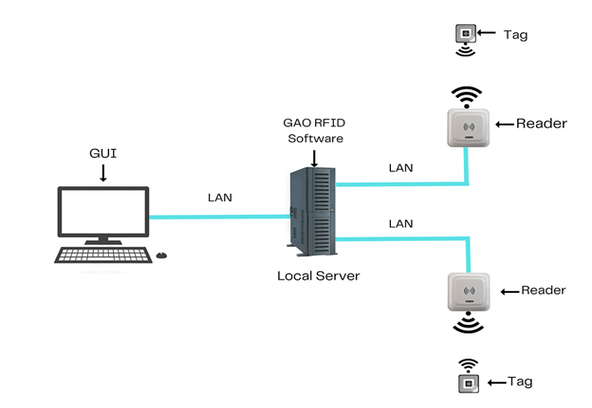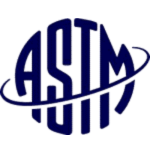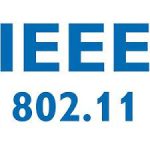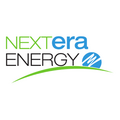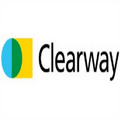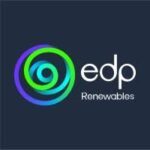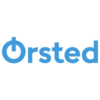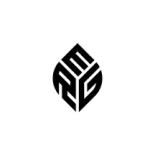Renewable Energy Development is a fast-growing sector that involves constructing and operating wind and solar projects. This provides a sustainable alternative to fossil fuels, emitting no harmful pollutants and reducing human impact on the environment. Moreover, it is becoming more cost-effective as technology improves. Once construction is complete, the project is operated and maintained to ensure that it continues to generate electricity for years to come. This involves ongoing monitoring and maintenance of the equipment, as well as management of the power grid and any necessary energy storage solutions. GAO RFID Inc. a global top 10 leader in RFID technology based in the cities of New York and Toronto, has extensive experience serving companies in the Renewable Energy Development.
GAO RFID Systems & Hardware for the Renewable Energy Development
GAO RFID Inc. offers the largest selection of BLE gateways, BLE beacons, RFID readers, tags, antenna, printers, and integrated RFID systems for various industries, including the renewable energy development.
BLE (Bluetooth Low Energy)
GAO offers advanced BLE gateways:
as well as versatile beacons with such important functions as temperature, humidity, vibration, and panic button:
- IP67 Rated BLE 2.45GHz Active RFID Wristband Tag w/ Panic Button
- BLE 2.45GHz Ultra Rugged Active RFID Pallet Tag/Beacon
- BLE 2.45GHz Active RFID Asset Tag/Beacon
GAO’s BLE technology is suitable for all kinds of industries, including the renewable energy development.
UHF (Ultra High Frequency) RFID
GAO offers the largest selection of UHF RFID readers for various industries, including the renewable energy development :
GAO RFID offers the widest choice of UHF RFID tags, labels, badges, wristbands for various industries, including the renewable energy development:
and an array of antennas to address different applications:
HF (High Frequency), NFC (Near Field Communications) and LF (Low Frequency) RFID
GAO offers the largest selection of HF, NFC, and LF RFID readers for various industries, including the renewable energy development:
- 134.2KHz ISO11784/5 FDX RFID Plug and Play Portable Reader
- 134.2 kHz LF Long Range Fixed RFID Reader
HF, NFC and LF RFID tags, labels, badges, wristbands for various industries, including the renewable energy development:
and antennas:
GAO also offers RFID printers, Digital I/O adapters and relay controllers :
For embedded applications, GAO offers UHF, HF and LF RFID reader modules:
- UHF 860 – 960 MHz RFID Modules
- 13.56 MHz High Frequency RFID Modules
- 125 kHz Low Frequency RFID Modules
The RFID systems by GAO are highly popular for clients in the renewable energy development:
People or workers tracking system:
Physical asset or operational equipment tracking system:
Personnel or people access control system:
Parking or vehicle control system:
There are two versions of GAO’s software, one is running on a local server, and another running in the cloud.
Benefits of GAO’s RFID, BLE & Drones for the Renewable Energy Development
GAO’s RFID, Bluetooth Low Energy (BLE) and drones renewable energy development all have unique benefits that can help to enhance different aspects of modern life. Here are some of the benefits of each technology:
Benefits of applying RFID to the renewable energy development:
- Faster and more accurate inventory management: GAO RFID tags can be read by a scanner without requiring line-of-sight, allowing for more efficient and accurate inventory management in warehouses and stores
- Improved supply chain visibility: GAO’s RFID products can help track the movement of products through the supply chain, enabling companies to optimize their operations and reduce waste.
- Enhanced security: our RFID solutions can be used to authenticate products and prevent counterfeiting, as well as track assets in real-time.
Benefits of applying Bluetooth Low Energy (BLE) to the renewable energy development:
- Energy efficiency: GAO’s BLE beacons consumes less power than traditional Bluetooth, making it ideal for low- power devices.
- Easy connectivity: Our BLE products allows devices to connect to each other quickly and seamlessly, without requiring complex pairing processes
Benefits of applying RFID with Drones to the renewable energy development:
- Faster and more efficient maintenance: Drones can be used to inspect and maintain renewable energy infrastructure such as wind turbines and solar panels, reducing the need for manual inspections and improving efficiency
- Enhanced safety: Drones can access hard-to-reach areas without putting human operators at risk.
- Improved data collection: Drones can collect data on renewable energy resources such as wind speed and solar radiance, enabling companies to optimize their operations and increase efficiency..
GAO Helps Customers Comply with Standards, Mandates & Regulations
GAO RFID Inc. has helped many companies in the renewable energy development to deploy RFID systems and to ensure such deployments complying with the applicable industry standards, mandates and government regulations:
- EPCglobal: EPCglobal is a set of standards developed by GS1, a global organization dedicated to improving supply chain efficiency. EPCglobal standards include the Electronic Product Code (EPC) standard, which is commonly used in renewable energy applications for asset tracking and inventory management.
- IEEE 802.11: This standard specifies the air interface protocol for wireless local area networks (WLANs). WLAN technology is commonly used in renewable energy applications for data communication between RFID readers and backend systems.
- ASTM E-2339: This standard provides guidelines for using RFID technology for tracking and managing assets in the renewable energy industry, including wind turbines, solar panels, and other equipment.
- Clean Air Act: – The Clean Air Act is a U.S. federal law that regulates air emissions from stationary and mobile sources, including power plants and vehicles. The Act sets national air quality standards and requires emissions reductions for certain pollutants, such as sulfur dioxide, nitrogen oxides, and carbon dioxide, which can be addressed through the use of renewable energy
- Renewable Fuel Standard: – The Renewable Fuel Standard (RFS) is a U.S. federal law that requires a certain volume of renewable fuels, such as ethanol and biodiesel, to be blended into transportation fuel each year. The RFS is designed to reduce greenhouse gas emissions and promote the use of renewable energy.
- Investment and Production in Tax Credit: – The ITC provides a tax credit of up to 26% of the cost of a qualifying renewable energy project, such as solar or wind energy, while the PTC provides a per-kilowatt-hour credit for the first ten years of a qualifying project’s operation and applies to electricity generated by renewable energy sources like wind, geothermal, and hydropower.
- Canadian Environmental Protection Act: – The Canadian Environmental Protection Act (CEPA) is a federal law that regulates the release of pollutants and hazardous substances into the environment. CEPA requires that renewable energy projects meet certain environmental standards and undergo an environmental assessment before they can be approve.
Case Studies of RFID Applications
Here are two cases of applying RFID in the renewable energy development:
In renewable energy development project, RFID technology was implemented to track the movement of solar panels. The solar panels were equipped with RFID tags, which allowed them to be tracked throughout the manufacturing and installation processes. This helped to ensure that each panel was installed correctly and that all panels were accounted for. The RFID tracking also helped to streamline the supply chain process by reducing the risk of lost or misplaced panels. By using RFID technology, the renewable energy company was able to increase efficiency, reduce costs, and improve overall quality control
In another renewable energy project, RFID technology was used to monitor the performance of wind turbines. RFID tags were attached to various components of the turbines, such as the blades and gearbox, to track their condition and performance. This allowed the company to quickly identify any issues or maintenance needs, and to schedule repairs or replacements as necessary. By using RFID monitoring, the company was able to reduce downtime and increase the lifespan of their wind turbines, resulting in significant cost savings and improved efficiency. Additionally, the RFID data allowed the company to optimize the performance of their wind turbines, leading to increased energy production and revenue.
GAO Has Served the Renewable Energy Development Extensively
GAO RFID Inc., a global top 10 leader in RFID, has served many leading companies in the renewable energy development, including its various divisions such as:
-
- Solar Energy: The solar energy industry involves the development, installation, and maintenance of solar photovoltaic (PV) panels, which convert sunlight into electricity. It includes utility-scale solar projects, commercial and industrial solar installations, and residential rooftop solar systems.
- Wind Energy: The wind energy industry involves the development, installation, and maintenance of wind turbines, which generate electricity by harnessing the power of the wind. It includes both onshore and offshore wind projects.
- Geothermal Energy: The geothermal energy industry involves the development, installation, and maintenance of geothermal power plants, which generate electricity by harnessing the heat from the Earth’s interior. It includes both conventional geothermal projects and enhanced geothermal systems.
- Hydro Energy: The hydro energy industry involves the development, installation, and maintenance of hydroelectric power plants, which generate electricity by harnessing the power of flowing water. It includes large-scale hydro projects and smaller-scale run-of-river projects.
Some of the leading companies in the renewable energy development in the US:
Some of the leading companies in the renewable energy development in Canada:


